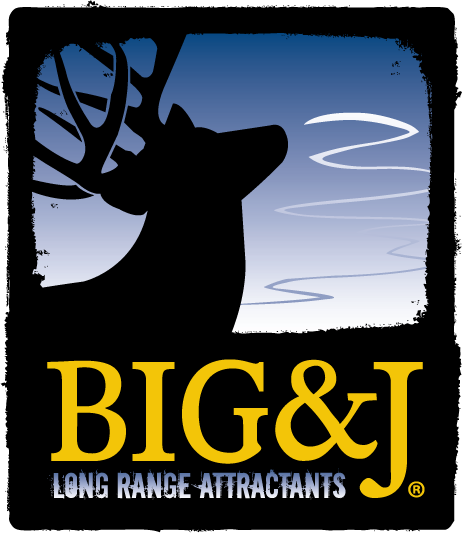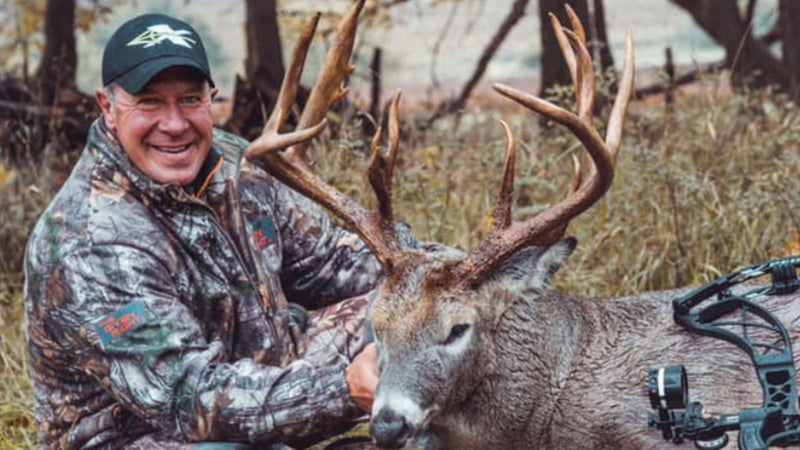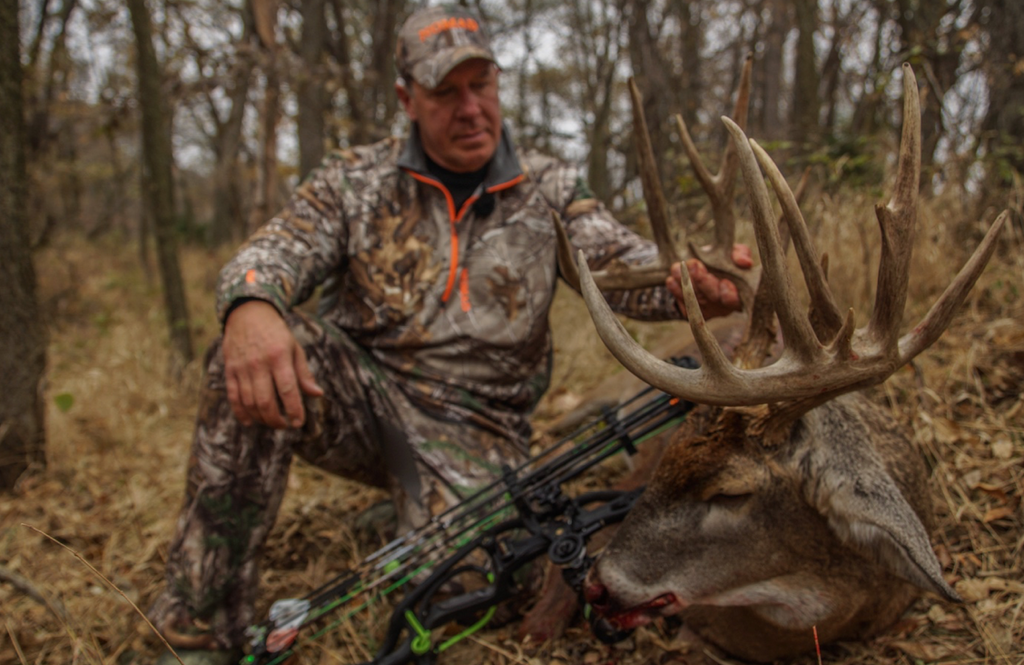
Mark Heck’s 196 7/8” buck from his Kansas farm. From the trail camera pics we estimated at least 11-13” were broken, which would’ve put him well over 200”.
Chris Van Gerpen, C&C Land Management, The Given Right and Xpedition Archery
We manage approximately 10,000 acres in North East Iowa and North East Kansas. Our main management focus is to improve deer habitat and herd health.
We have been managing wildlife property for as long as I can remember, but in the past 10 years, we have shifted to overall herd management to drive results. In a blog posted earlier this year, Josh Kinser used the quote, “There is no silver bullet. It’s all about the pieces you put together in your management program and the key is sticking with the plan.” He could not be more correct, you need a case of silver bullets! Regardless of your location or animal that you manage there is not one single thing that you can do to achieve success; it’s a multitude of things. The plans that we develop for our farms vary based on different geographic areas. These plans are multifaceted with multiple programs coordinated to enhance herd health.
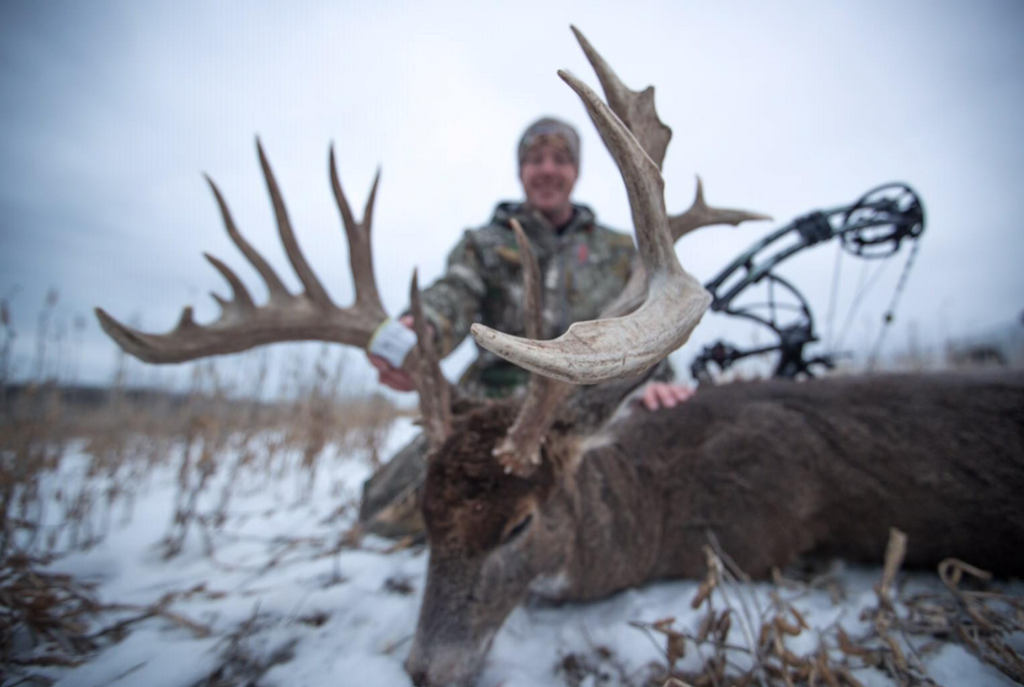

My 201” Iowa buck. Shooting this deer was a dream of mine and taking it was the combination of years of management, scouting, nutrition, genetics and just a little bit of luck too.
Our main goal with herd health is to give deer the opportunity to reach their genetic potential. We use supplemental feeding programs when and where we can. We use Big & J’s BB2 as a key element in our supplemental feeding. In Kansas, feeding is allowed year-round, which we take full advantage of to give deer the best opportunity for maximum protein and other nutrition. This is important because deer love to have variety. Deer will never stand in one spot and eat the same thing all day, so it is important that your supplemental feed packs a punch, both in the nutrients and digestibility. You are wasting time and money feeding it if the deer cannot digest it!
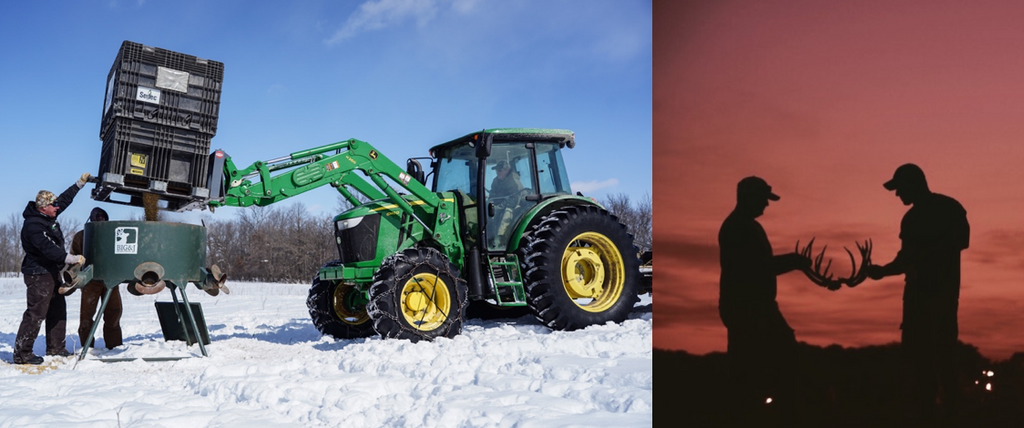
We start feeding heavily after the season is over to help these deer get their weights back up and through the tough Northern winter months.
In the states such as Iowa that do not allow feeding during the season, we use supplemental feed based on what the law allows. Winters can be rough in the Midwest with large amounts of ice and snow cover. Deer use a lot of energy searching for food, or just walking from various locations to find food. Conserving energy during the winter months is important for the next years antler development. My belief is that the largest impact on antler development happens before spring arrives and visible antlers have formed. This energy conservation is also important for does and their fawns. If you have a healthy doe, you have a better chance at a healthy fawn. This equals higher survival rates and better odds that button bucks get through the first and hardest year of life.
The second aspect of supplemental feeding is mineral. A good mineral does not rely on salt to draw deer, Legit and Meltdown fit that bill for me. Bucks need these minerals to maximize antler development. As rule of thumb, I like to have one mineral location for every 40 - 80 acres. This allows easy access for the herd.
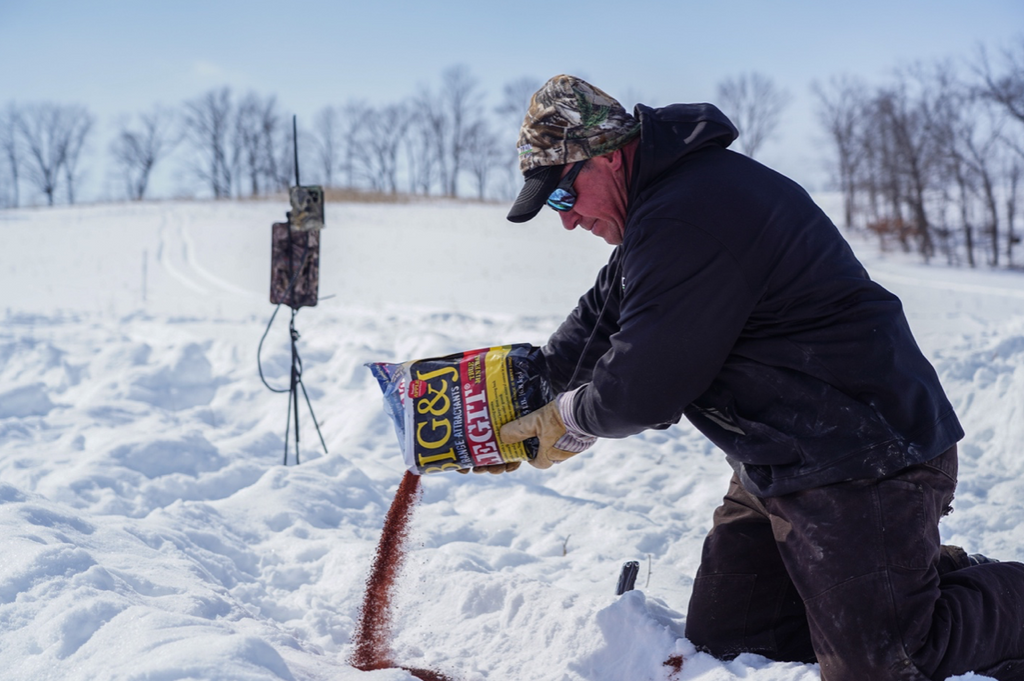
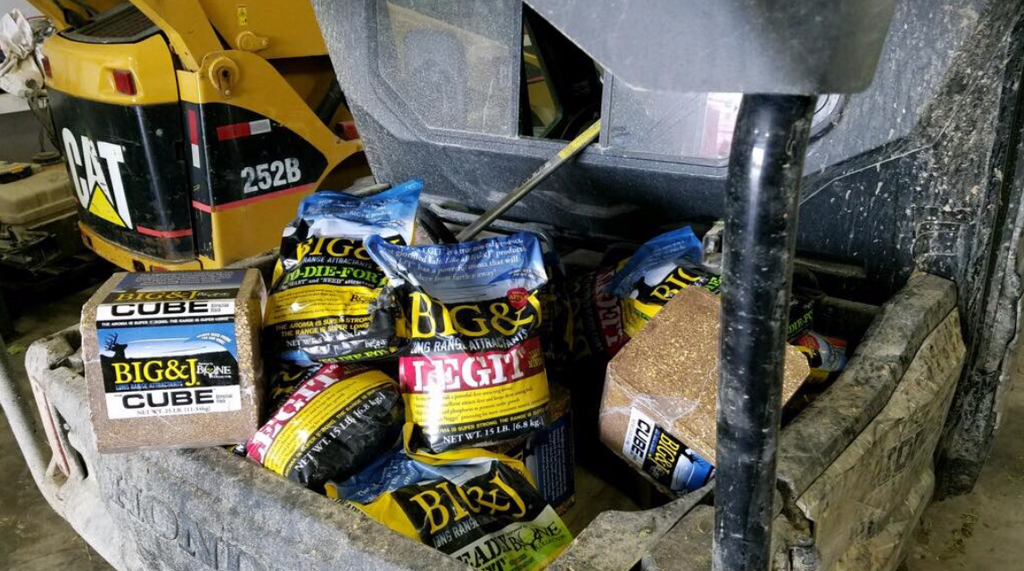
The work starts for the next season as soon as the previous season ends. Mark loads up the UTV to hit mineral sites across the farm.
The third and final step to supplemental feeding is one that most people overlook because it does not come in a bag; BROWSE!! A lot of farms we do consults on do not have enough small trees or undergrowth to support the herd. Deer must have this in addition to supplemental feeding for optimal digestion in the winter. Additionally, the browse in the spring is packed with great nutrition that deer need after a long winter. If you walk up to the tree line and can see all the way through it, you do not have enough browse. A lack of browse/undergrowth can be caused by two things, deer pressure or an over mature stand of trees. Creating browse can be the most cost-effective element of your supplemental feed program.
Hinge cutting trees are the easiest way to create more browse for your herd. Hinge cutting is done by cutting trees about waist height or higher and tipping them over. The key is to cut them just enough to tip them over and keep the tree alive. This is not a task to take on alone, ALWAYS have someone with you when you are cutting trees, especially when using a chainsaw. It is important to hinge cut selectively and deliberately because these areas will provide important browse but also create bedding areas. This will alter how deer enter and exit the area. The cost for hinge cutting can be very minimal, a days’ worth of sweat and use of a hand saw or chainsaw. The importance of hinge cutting is a topic to be covered in another article. The key takeaway is to create new growth at ground level so deer can reach it.

Mark hinge cutting some trees on his Iowa farm.
Anything you can do will ultimately benefit your deer’s herd health. However, a plan that includes various techniques to address all aspects of the deer health will provide the most success. Remember, there is no silver bullet. Mother nature is beautiful, but she is unforgiving and shows no mercy to those who are weak. Providing a multifaceted approach to herd health for all stages of a deer’s life is the ultimate goal. In addition, deer are social animals, but big bucks are typically not. One feeding area is not conducive to holding big bucks so spread your supplemental feeding areas out if possible.
In closing, all the techniques used with herd management have the potential to influence or change how deer use your property. Keep this in mind because it may impact stand locations or entry/exit routes that you have used for years.
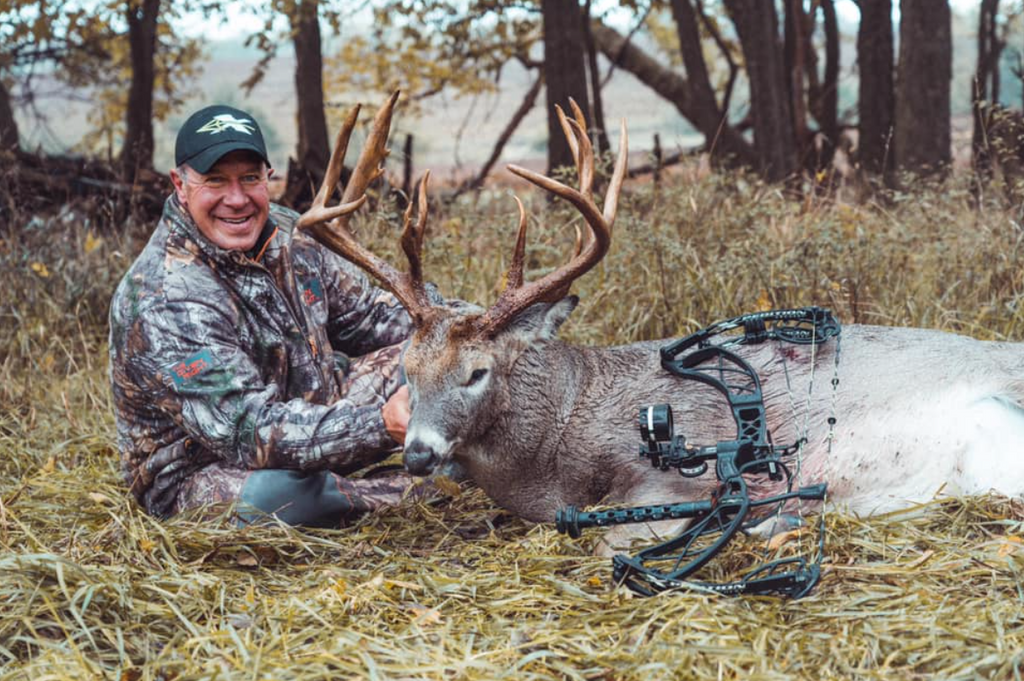
Mark’s Kansas buck that scored 196 5/8. We watched this deer for 3 years, and with the nutrition we were able to provide, he made a huge jump in body and rack size.
